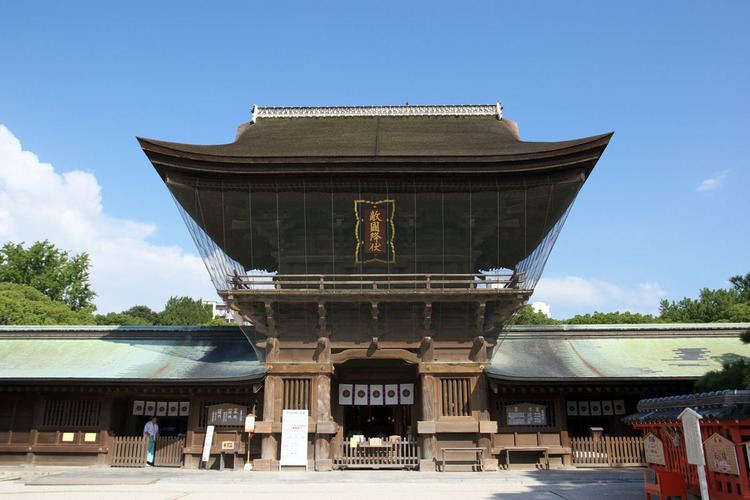Phone +81 92-641-7431 | ||
 | ||
Address 1 Chome-22-1 Hakozaki, Higashi Ward, Fukuoka, Fukuoka Prefecture 812-0053, Japan Similar Hakozaki‑Miyamae Station, Kashii‑gū, Dazaifu Tenman‑gū, Hachiman shrine, Munakata Taisha | ||
Hakozaki shrine fukuoka city
Hakozaki Shrine (筥崎宮, Hakozaki-gū) is a Shintō shrine in Fukuoka .
Contents
- Hakozaki shrine fukuoka city
- Hakozaki shrine fukuoka japan as it truly is
- History
- Shinto belief
- Treasures
- Festivals
- References
Hakozaki shrine fukuoka japan as it truly is
History
Hakozaki Shrine was founded in 923, with the transfer of the spirit of the kami Hachiman from Daibu Hachiman Shrine in what is Honami Commandry, Chikuzen Province in Kyūshū.
During the first Mongol invasion on November 19, 1274 (Bun'ei 11, 20th day of the 10th month), the Japanese defenders were pushed back from the several landing sites. In the ensuring skirmishes, the shrine was burned to the ground. When the shrine was reconstructed, a calligraphy Tekikoku kōfuku (敵国降伏; surrender of the enemy nation) was put on the tower gate. The calligraphy was written by Emperor Daigo, dedicated by Emperor Daijo Kameyama to supplicated to defeat enemies who invade.
The shrine is highly ranked among the many shrines in Japan. It was listed in Engishiki-jinmyōchō (延喜式神名帳) edited in 927. In 11th century or 12th century, the shrine was ranked as Ichinomiya (一宮; first shrine) of Chikuzen Province.
Admiral Heihachiro Togo, famous for defeating Russia on the seas, was known to worship often at Hakozaki shrine.
From 1871-1946, Hakozaki was officially designated a Kanpei-taisha (官幣大社), in the first rank of government supported shrines. Other similar Hachiman shrines were Iwashimizu Hachimangū of Yawata in Kyoto Prefecture and Usa Shrine of Usa in Ōita Prefecture.
Shinto belief
Hakozaki Shrine is dedicated to the veneration of the kami Hachiman. This shrine especially venerates the memories of Emperor Ōjin, Empress Jingū and Tamayori-bime.
Treasures
A number of structures in the shrine complex have been designated as important cultural asset of Japan, including the main hall, the worship hall, tower gate and the main Torii, Ichino-torii.
Festivals
The annual Tamaseseri Festival (January 3) and the Hojoya Festival (September 12–18) attract many to visit the shrine.
